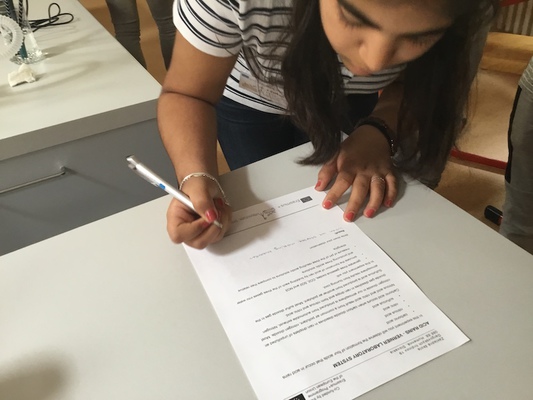The fifth day of the mobility was focused on the teaching in the school garden.
We showed our partners four lessons and how to teach them in the garden outside the school.
Here is the short video from this day.
School gardens for teaching
MATHS
How tall is the tree?
1. method
The easiest way how to measure the height of the tree is to measure it according to the height of the person.
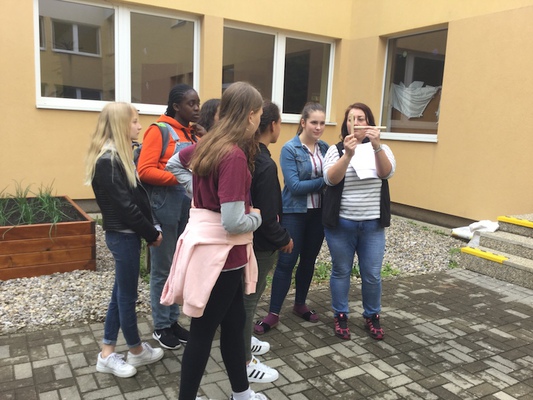
We ask our classmate to stand next to the tree. What should we know is the height of the classmate according to this fact we can then try to estimate how much ist the taller then the classmate.
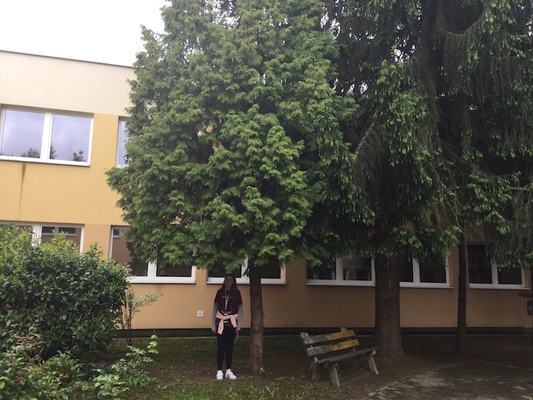
2. method
The second method is called Stick method
This metod is based on the measurement by two sticks of the same lenght. One of two sticks is aimed at eye level horizontally on the tree. We put the second stick ate the end of the first one vertically.
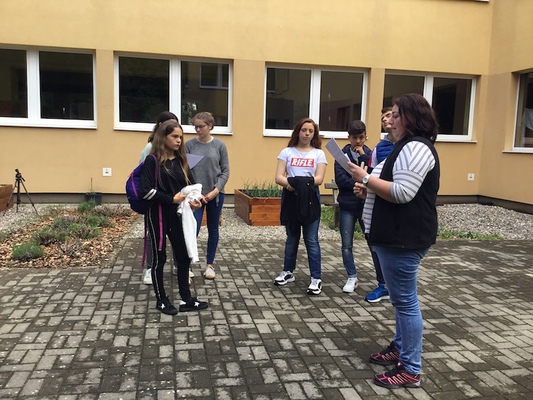
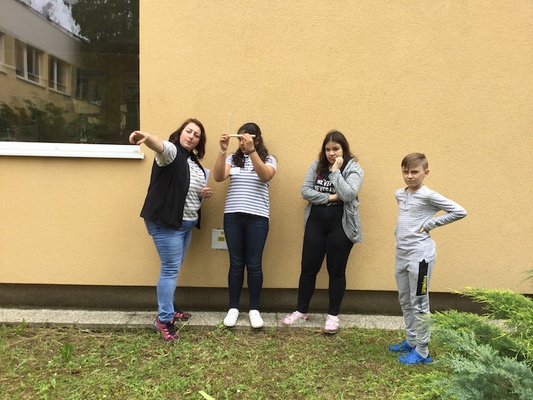
Then we move forwards or backwards until the end of vertical stick covers the top and the bottom of the tree. We mover the vertical stick up and down. If we are succesful in focusing the tree by this way, we can measure the distance between us and the tree which should be the same as the height of the tree.
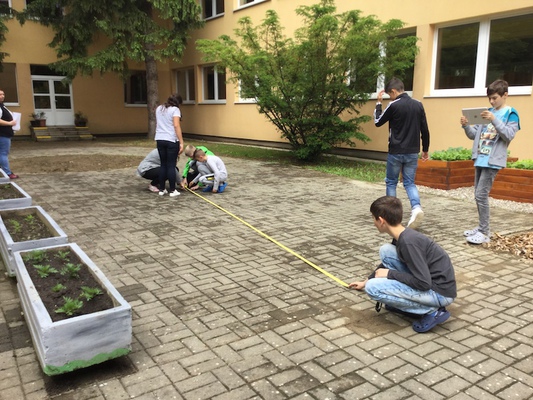
English lesson
Parts of the speech
The lesson consisted of two tasks.
In the first one pupils who worked in international teams had to looked around the garden and find eight nouns related with the garden, green etc.
Then they had to match eight adjectives to them and together with eight verbs made simple sentences.
Finally they used eight adverbs of manner or place....
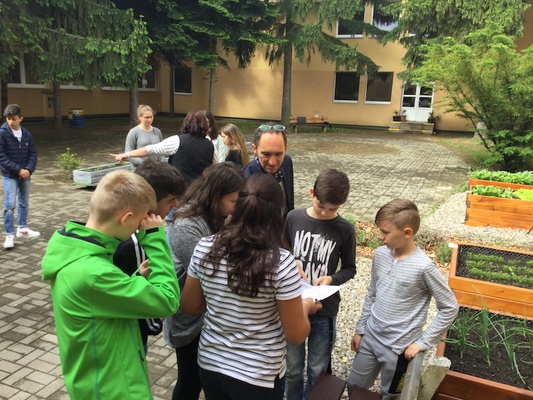
The second task was to make a poem according to the strict rules.
They wrote a Cinquain Poem in following way:
Line 1: One word (a noun, the subject of the poem)
Line 2: Two words (adjectives that describe the subject in line 1)
Line 3: Three words (-ing action verbs - participles - that relate to the subject in Line 1)
Line 4: Four words (a phrase or sentence that relates feeling about the subject in Line1)
Line 5: One word (a synonym for the subject in Line 1 or a word that sums it up)
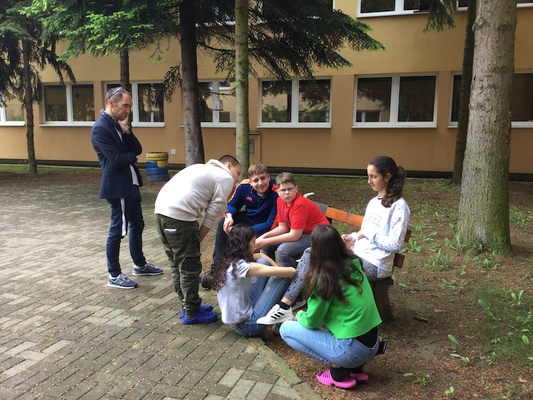
History lesson
The trees - the silent witnesses of the history
Although it was history lesson we conected it with the school garden and biology.
The main tool for this lesson was the wooden stump with the rings.
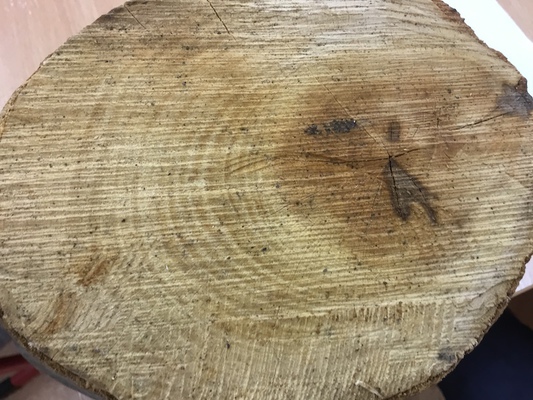
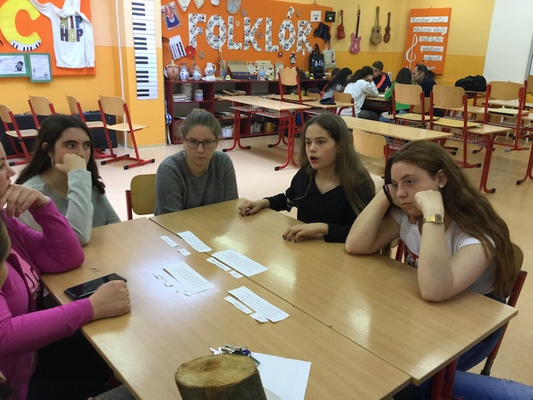
We prepared some historical facts from the important historical events and the period which should be the pupils know. There was also an important event connected with these historical events.
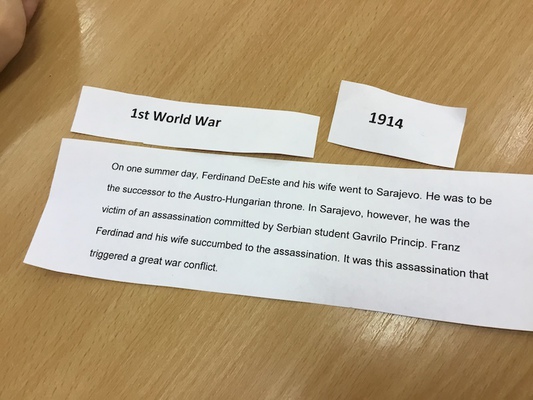
The second important knowledge, which we expected, would be the rings on the wooden stump and how the rings are formed, where the older and the younger on the stump.
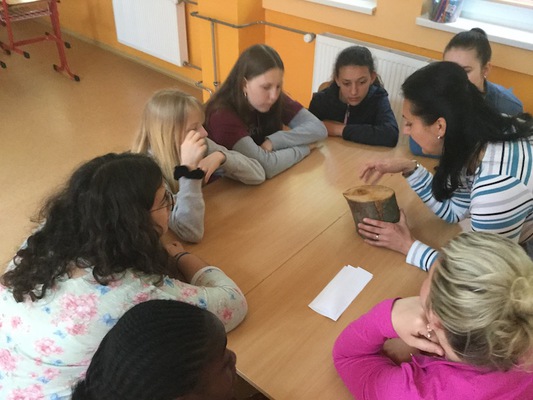
Firstly the pupils had to match the historical event with the period in which this event happened and then they pinned them on the rings in the correct order.
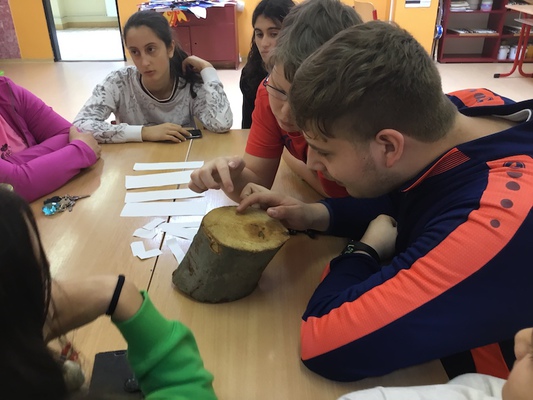
BIOLOGY LESSON
How to use IT in a school garden
We decided to introduced our project partner mobile application which we use in our biology lessons.
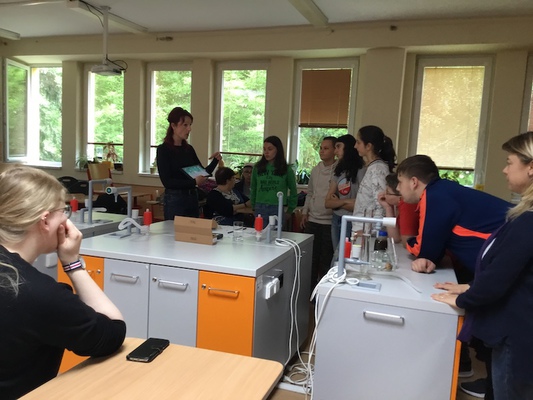
PlantNet is a usefull application which allows to identify plants from pictures we have in our mobile phones or tablets or directly by taking photos of a plant we want to indetify.
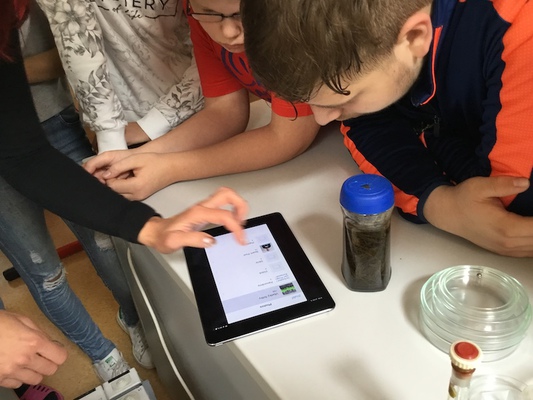
We put labels with the numbers to the plants in our school garden and the students in each international team took photos directly in our school garden.
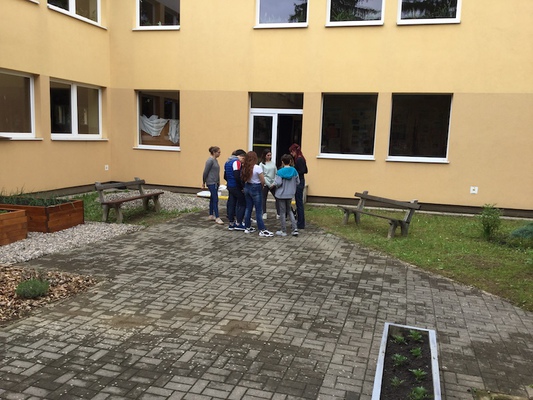
Then they tried to identify these plants by using application PlantNet.
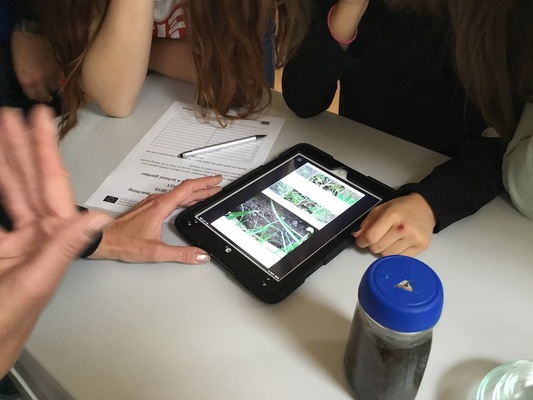
In the second part of the biology lesson we used our laboratory system Vernier and talked about Acid Rains.
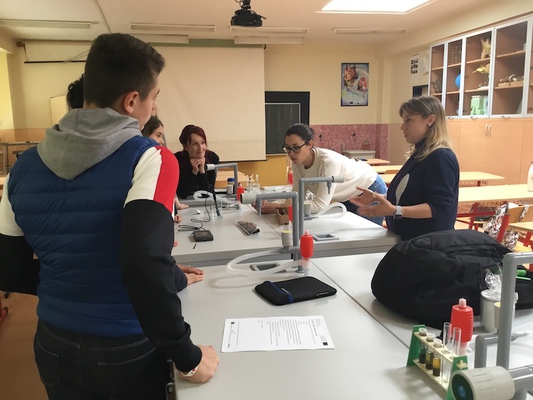
Great thank to Spanish biology teacher who collaborated with Slovak biology teacher in this lesson because of the exchange of the experiences and teaching methods and good practice.
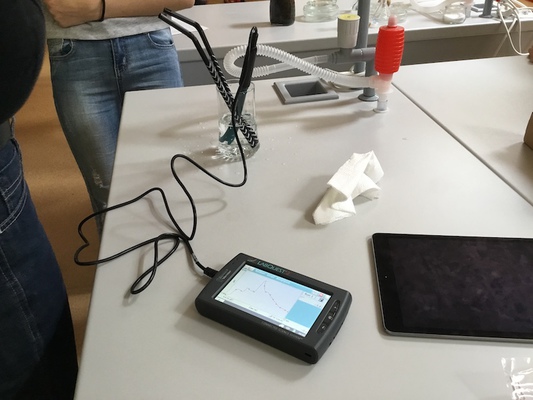
In this experiment we generated three gaseous oxides, CO2, SO2 and NO3.
We simulated the formation of acid rain by bubbling each of the three gasses into water and producing three acidic solutions.
We found out decrease of pH during this experiment which was caused CO2 in water.
